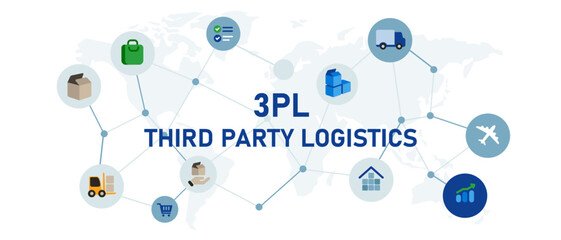Table of Contents

Introduction
When sellers consider how to fulfill their orders, the two most common choices are Amazon FBA and third-party logistics (3PL). Both models have clear advantages, but costs and flexibility can vary greatly depending on the situation. This article breaks down the key differences to help sellers make an informed decision.
Why Compare FBA and 3PL?
Amazon FBA offers speed and access to the Prime badge, but it comes with standardized processes and strict rules. On the other hand, China 3PL fulfillment in China offers flexibility, tailored services, and often lower costs in specific cases. Sellers need to weigh factors such as fees, storage, prep, and returns before committing to one model.
Purpose of This Guide
The goal of this guide is to highlight where 3PL can be cheaper than Amazon FBA, especially for cross-border e-commerce sellers. We will explore fees, storage, inbound logistics, and post-sales services, ending with practical scenarios where 3PL makes more sense.
Fulfillment Fees Comparison
Fulfillment fees are a key cost driver for e-commerce businesses. Amazon and 3PLs structure their charges differently, which directly impacts profitability.
Amazon FBA Fees
Amazon FBA charges per unit, covering picking, packing, shipping, customer service, and returns. For small, fast-moving products, this bundled cost structure can be convenient and cost-effective.
3PL Fulfillment Fees
Most 3PL providers break down fees by storage, picking, packing, and shipping. While this may seem more complex, it often leads to savings because sellers only pay for what they use. Many providers also offer volume discounts for bulk orders.
Direct Comparison
In general, fast-moving small products may be cheaper with Amazon FBA, but for larger or slower-moving items, 3PL fulfillment in China is typically more cost-effective.
Storage Costs
Storage fees can eat into profit margins, especially during peak seasons. Both Amazon and 3PL providers have distinct approaches to charging for storage space.
Amazon Storage Costs
Amazon charges by cubic foot, and prices increase significantly during Q4. This model penalizes long-term storage and can lead to unexpected costs for slower-moving inventory.
3PL Storage Costs
3PL warehouses usually charge by pallet or shelf space. This system is more stable and predictable, making it ideal for sellers who need to store goods long-term or manage seasonal demand.
Comparison
Sellers with long-term storage needs often find 3PL cheaper, particularly when they want to avoid Amazon’s Q4 surcharge. Learn more about options on our Warehousing & Storage page.
Prep and Labeling Services
Product preparation and labeling are essential for meeting marketplace requirements. How these services are priced and executed can significantly affect both cost and brand control.
Amazon Prep Services
Amazon charges separately for FNSKU labeling, polybagging, and bundling. These services are mandatory if products are not compliant, but sellers have little flexibility and limited branding options.
3PL Prep Services
3PL providers, such as HUIXIN, offer custom labeling, bundling, and packaging at lower costs. This gives sellers more control over branding and customer experience. Private-label sellers benefit from higher flexibility and lower prep fees.
Direct Comparison
For sellers with private-label products or those who need frequent bundling, 3PL prep services are more cost-effective. Explore our Amazon FBA Prep solutions.
Inbound Logistics
How products move from suppliers into the fulfillment network can create hidden costs. Amazon and 3PLs handle inbound logistics very differently.
Amazon Inbound Process
FBA requires strict appointments and may split inventory across multiple fulfillment centers. This often forces sellers to ship to different locations, increasing transport costs.
3PL Inbound Process
With a 3PL, sellers can send goods directly from Chinese suppliers to a central warehouse. The 3PL can inspect, consolidate, and then forward shipments to Amazon or other channels, avoiding costly split shipments.
Comparison
For cross-border sellers, 3PL inbound logistics usually lead to significant savings and smoother operations.
Returns and Customer Service
Returns management is often overlooked but has a major impact on margins. The way returns are processed can determine whether a product is resold or written off.
Amazon Returns
Amazon charges fees for returns, and in some cases, items are simply destroyed if they cannot be resold quickly. This can be costly for higher-value items.
3PL Returns
3PL providers can process returns according to seller requirements. Items can be inspected, repackaged, and restocked, recovering value and reducing losses.
Comparison
Sellers of higher-value items often find 3PL returns management more flexible and cost-saving compared to Amazon’s rigid system. Learn more in our Value-Added Services section.
When 3PL is Cheaper
3PL is not always the cheapest, but it outperforms Amazon FBA in several common scenarios. Sellers can benefit greatly by identifying these situations.
Typical Scenarios
- Shipping directly from Chinese factories
- Handling large or low-turnover products
- Long-term storage requirements
- Private-label or customized packaging needs
- Multi-channel sales beyond Amazon
In these cases, sellers consistently find 3PL more cost-effective and better aligned with business growth.
Conclusion
Amazon FBA remains a strong option for small, fast-selling products and sellers who prioritize Prime eligibility. However, 3PL offers unmatched flexibility, better cost control, and customized solutions that make it the smarter choice for many cross-border sellers. To understand your real costs and opportunities, consider partnering with China 3PL for a detailed cost comparison and tailored fulfillment plan.